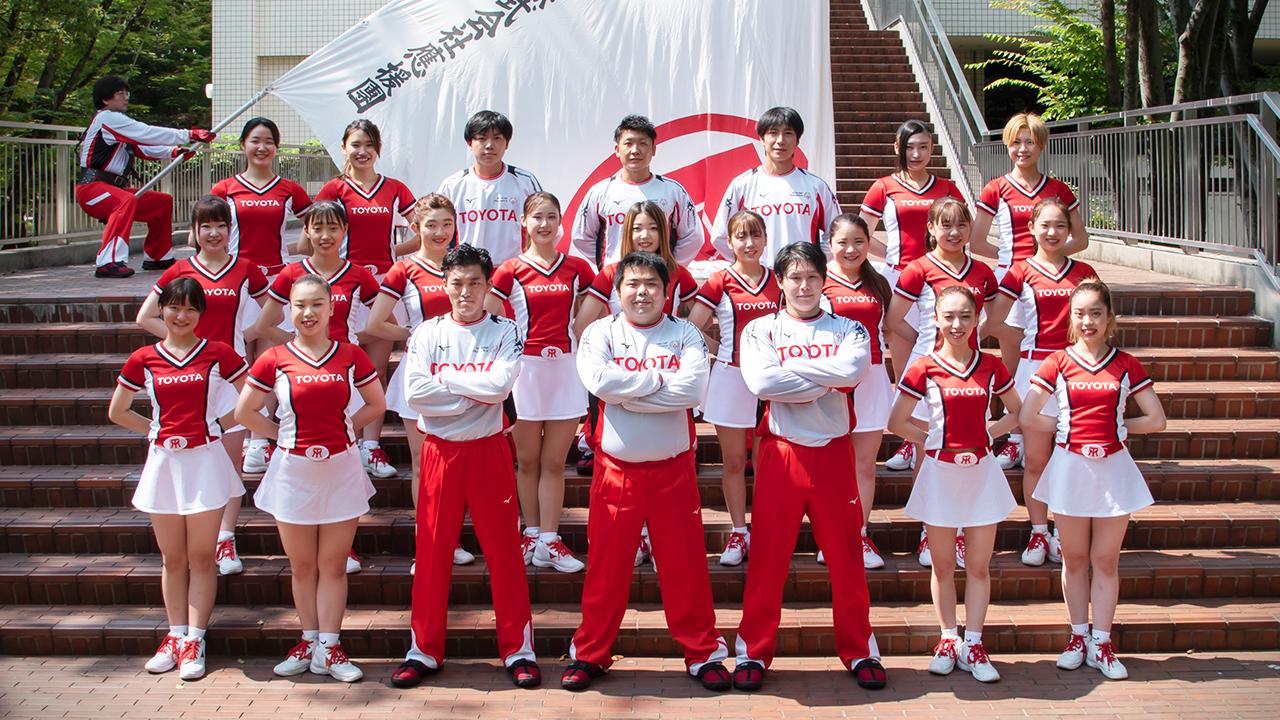
The Toyota Cheer Squad has a long history dating back to 1969. Why do its members give up their personal time to cheer on athletes? In this spotlight article, members explain what they find enjoyable and significant.

All of the Toyota Cheer Squad members are employees
It was a Saturday morning at Toyota’s indoor gymnasium for employees in Toyota City, Aichi Prefecture. Men and women in sportswear arrived one after another, exchanging good morning greetings with full energy. On this practice day, the Squad rehearsed thoroughly until evening, in preparation for the upcoming Tokai regional qualifying round of the Intercity Baseball Tournament of Japan (Note: Due to the COVID-19 pandemic, the Squad later decided to refrain from cheering at the qualifying round).
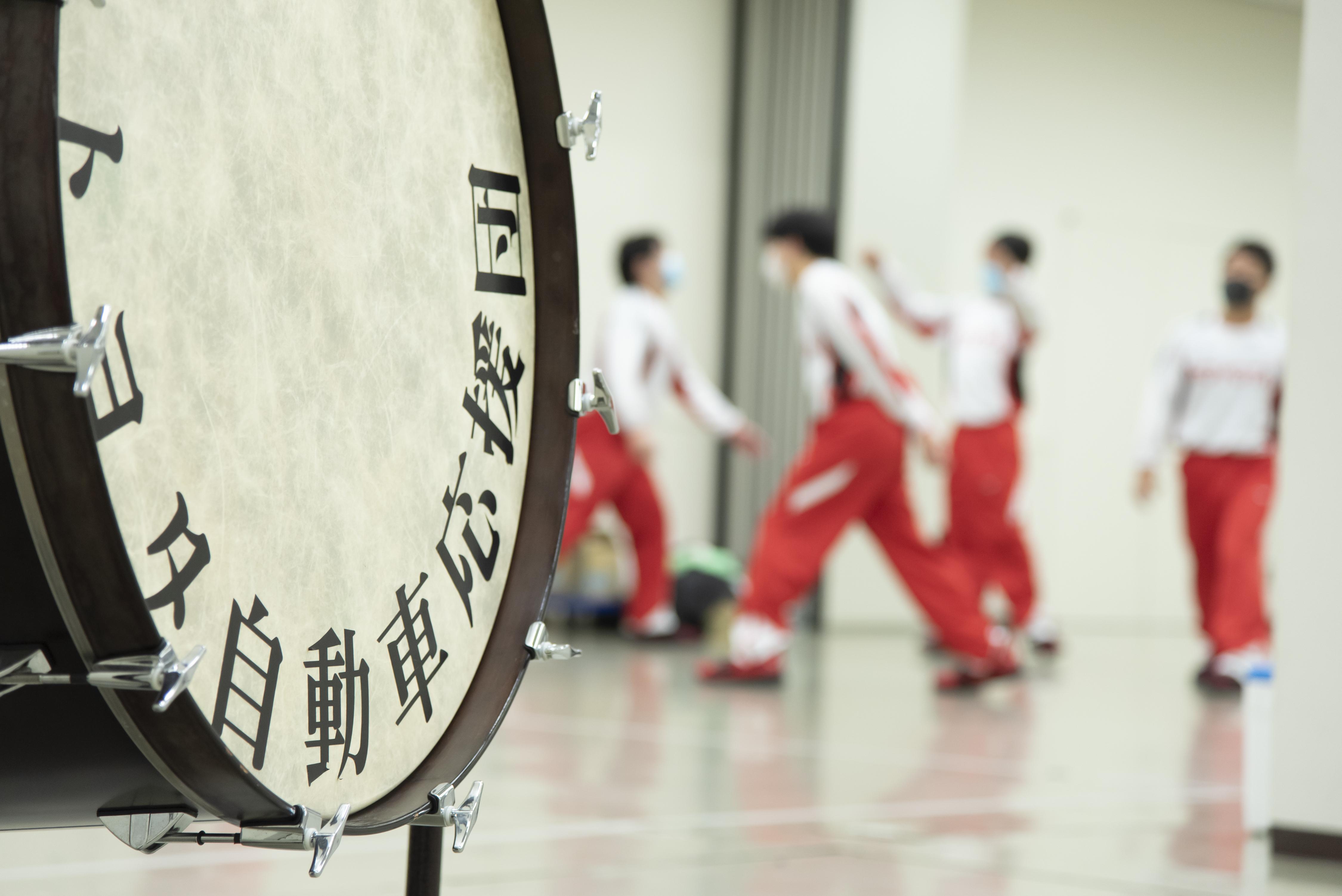
The Squad leader and deputy leader explained the schedule for the day. After everyone finished their warm-up, the practice started with recorded music reverberating through the room. A male Squad alumnus, who is an advisor, whispered, “This is performed when the inning switches and Toyota is at bat.”
The men showed off powerful moves characteristic of Japanese cheer squads and were joined by the female cheerleaders who put on a brilliant dance. It was old-fashioned rough cheering, combined with the glittering movements of the cheerleaders. The description makes the male and female cheers appear like complete opposites. However, when viewed up close, the two are not incompatible; rather, they are in perfect harmony.

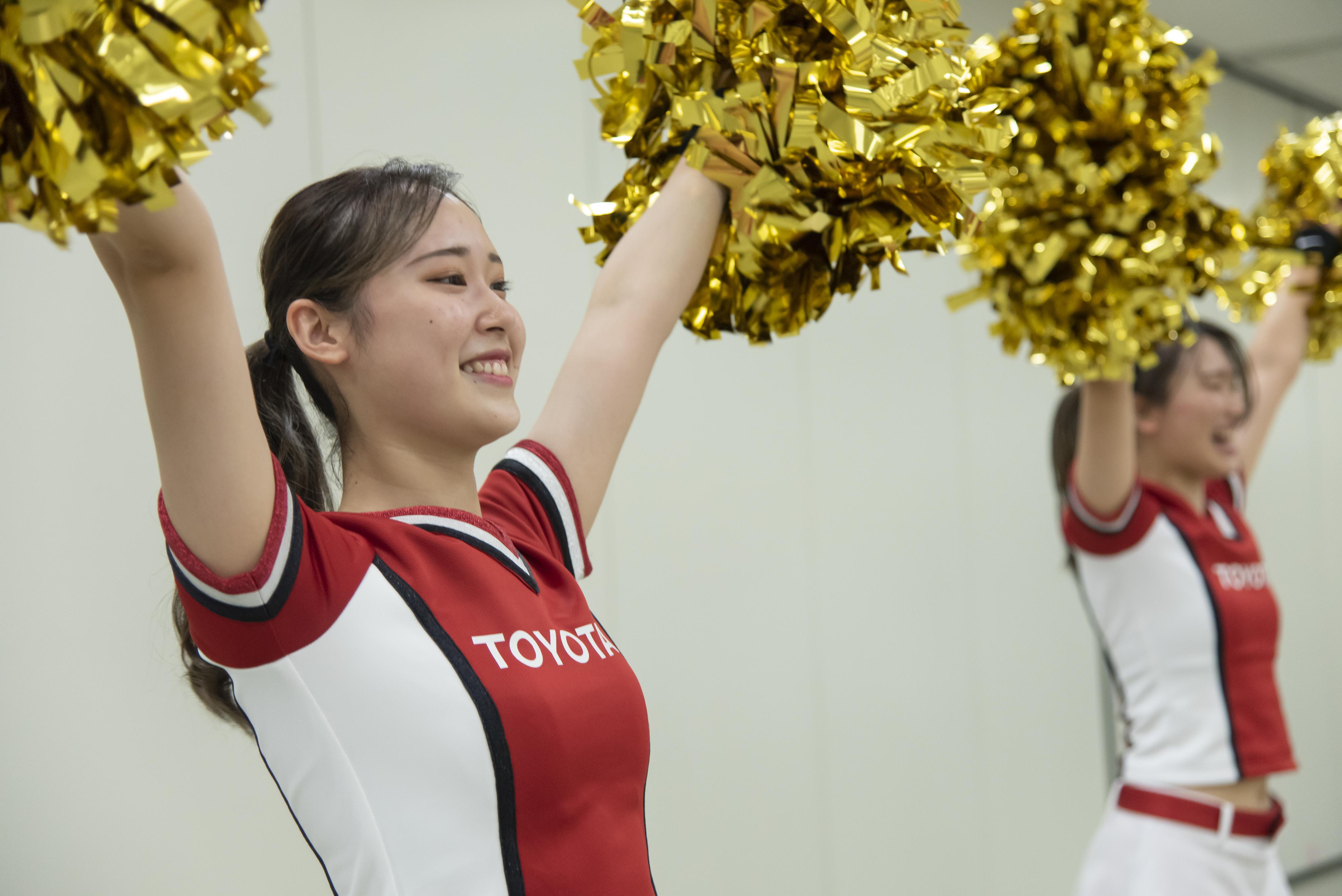
The rhythm of the music intensified. “We are assuming that a Toyota batter just got a hit,” says the alumnus. The Squad went onto perform routines for each situation, such as when a run is scored, when players are introduced with their respective cheer songs, and when the inning switches from batting to playing defense.
The routines are exhilarating when seen up close, and the well-orchestrated teamwork is impressive. The alumnus then explains, “Toyota’s Cheer Squad is committed to having an all-employee squad.” The Toyota Cheer Squad consists of 32 members: 13 male cheering supporters and 19 female cheerleaders. They practice voluntarily to cheer on sports clubs and teams without receiving help from outside performers.
What sort of people take time out of their busy work schedules to practice and even travel long distances to support clubs and teams? Koichi Shirasaka, the Squad leader, and Kosuke Okuda, the deputy leader, explained after their morning practice session.
Motive for joining the Toyota Cheer Squad
The Toyota Cheer Squad was established in 1969. Originally formed to cheer for Toyota’s baseball team, it began to also travel to matches of the Japanese soccer league and to games of the basketball team. Today, they mainly cheer and enliven the games of four sports, among the seven clubs and teams that are known as “representative sports clubs”: baseball, women’s softball, rugby, and women’s basketball.
Shirasaka, who has been in the Squad for ten years, and Okuda, for eight years, both work at Toyota’s Motomachi Plant. However, Shirasaka belongs to the Machining Division and Okuda to the Body Production Engineering Division, and their duties are completely different. What motivated Shirasaka to join the Squad?
When the 2012 Intercity Baseball Tournament was held at Tokyo Dome, all the plants were asked to send cheer supporters. When I went, I found out there was a “Cheer Squad competition” that year. The Squad did not have enough dancers for the tournament, and so I danced with them. Tens of thousands of people moved to my actions and rooted for us. It was incredible. From then on I became a member of the Squad.
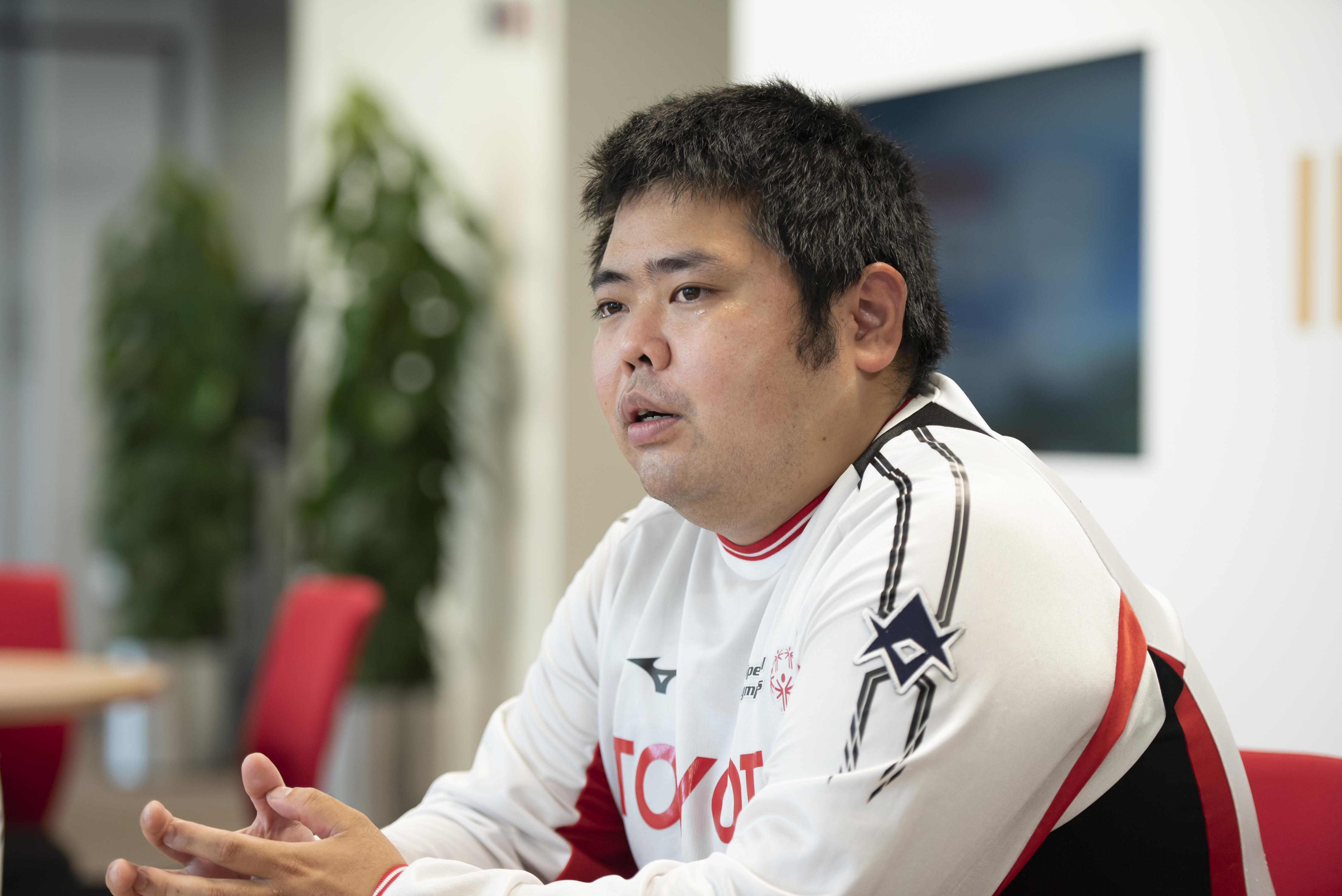
Okuda recalled that he joined because he loves to stand out.
The principal of my high school was a baseball fan and said he wanted to create an impromptu cheer squad. I had just retired from the kendo club, and thinking I could stand out, I offered to participate. When I joined Toyota, I was looking through various materials and discovered that the company had a cheer squad and that it had won awards in cheer squad competitions. If I had the chance, I wanted to give it a try.
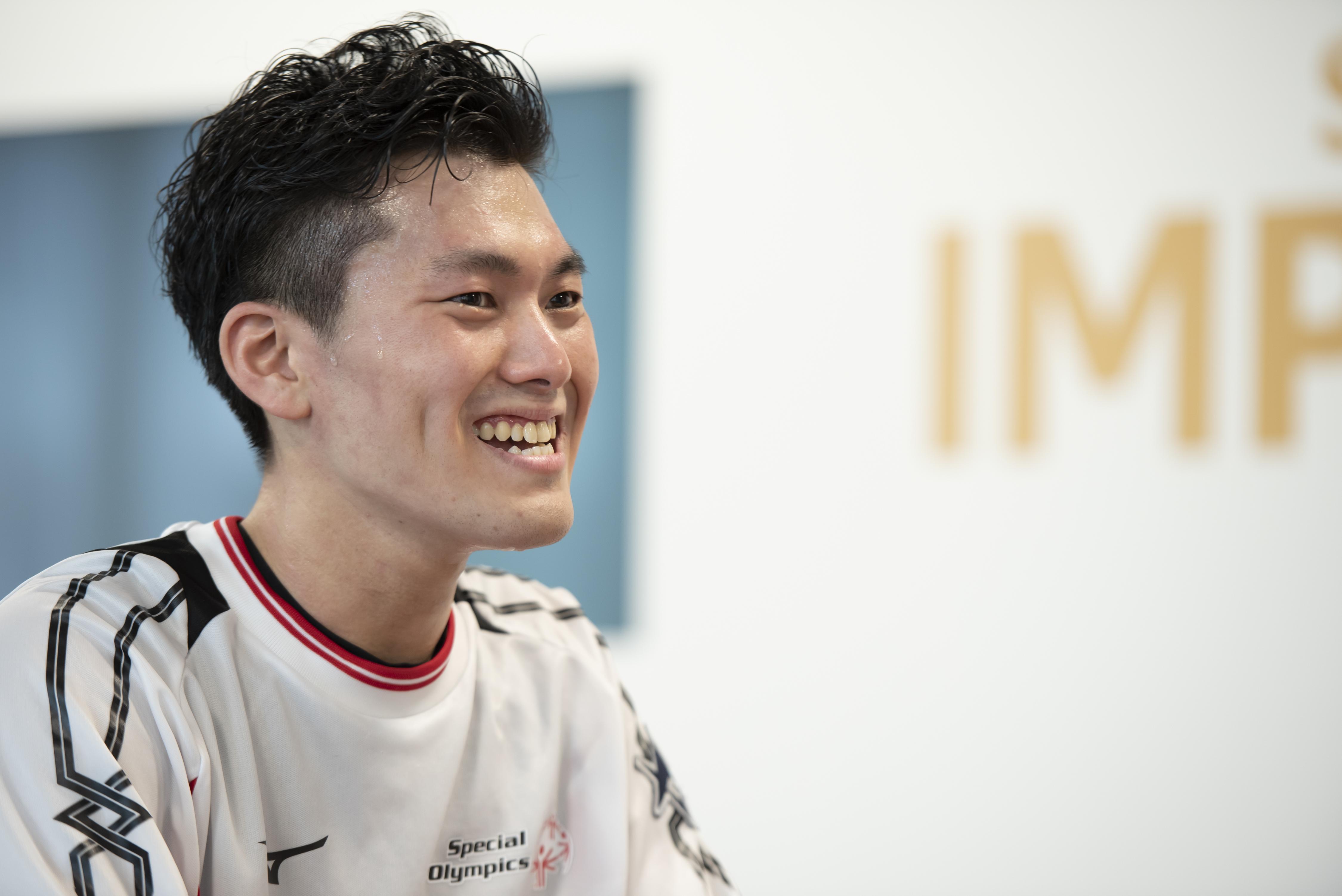
What is the reason and motivation for continuing with the Cheer Squad?
The Squad currently practices from 6:30 p.m. to 9:00 p.m. twice a week on weekdays. If there is a tournament coming up, like at the time of this interview, practice is also held on another weekday and on the weekend.

As soon as each sport opens its season, the Squad spends the weekends cheering on the games. Women’s basketball lasts until early spring, and in May, intercity baseball and women’s softball start. When they finish, it is August, the only time of the year when there are no official matches before women’s softball enters the second half of its season.
After August, practice for the Intercity Baseball Tournament begins. In the fall, the men’s and women’s basketball and rugby seasons open, and then it is spring again. Some sports have overlapping seasons; for example, if the baseball team and the women’s softball team have an official game on the same day, the Squad may split into two groups and go cheer for both teams.
The Squad members have a rigorous schedule, practicing and cheering while still working at their jobs. Asked if Okuda ever wanted to go play on his days off, he replies without hesitation, “Not me.”
I enjoy practicing with everyone on the Squad. At the games, the spectators who come to cheer tell us, “The Cheer Squad is cheering hard, so we will cheer too.” Yes, it is grueling to move around in the heat, but cheering gives me inspiration. So, no, I do not find it boring not to be able to go out and play, or that practice is hard.
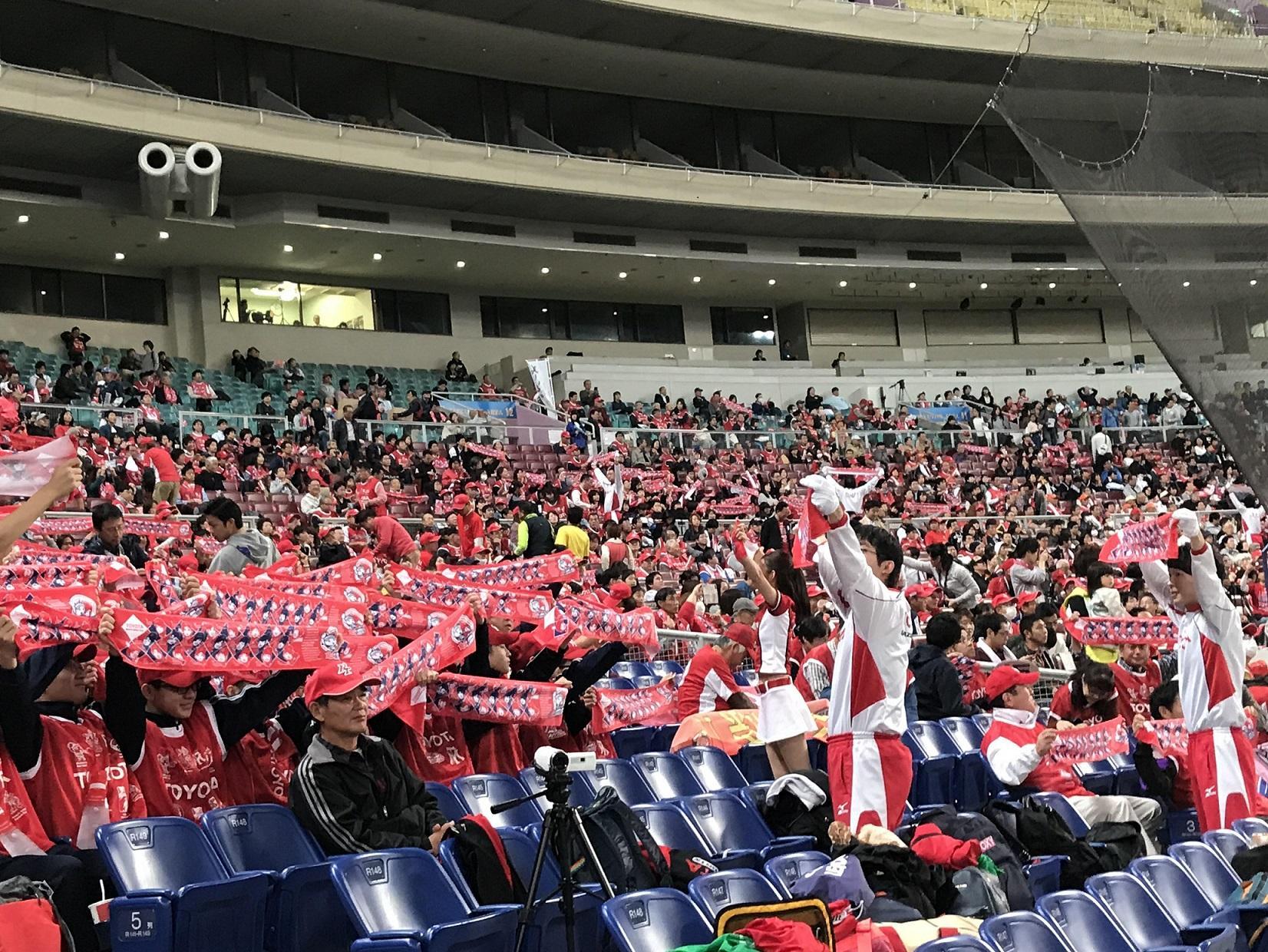
Shirasaka says, in addition to interacting with the fans he meets at the venues, interacting with the athletes also motivates him to cheer for them.
After the games, there is not really time to talk to the athletes. But at the end of the season, we are invited to the gathering of each club and team, where many of the players thank us. Although my goal is not to be thanked, it is still nice to be appreciated. (Monica) Abbott, a member of the U.S. women’s softball team that won the silver medal at the Olympic Games Tokyo 2020, is very friendly and comes talk to us.
Almost all of the male members have no previous experience
A problem now facing Shirasaka and Okuda is securing Squad members. While the female cheerleading team has a steady stream of applicants, the male cheering team has trouble finding new members.
In order to recruit young people to the Squad, Okuda suggests it is time for a new approach.
When people hear the word ouendan (cheer squad), I think they picture a group of manly men wearing a stand-up collar school uniform (which is a typical style of the traditional men’s cheer squad in Japan). That is why I am considering incorporating elements that young people can enjoy together. For example, we can integrate dance moves popular on TikTok, or change the feel by incorporating anime or BTS-inspired parts into our performance.
While Shirasaka welcomes new initiatives, he says he would like to keep Toyota’s style.
The athletes are our colleagues at Toyota. They are family, and at the games, the Cheer Squad cheers for its family. Ideally, the Cheer Squad, the spectators, and the fans all cheer together, and I want to preserve this tradition.
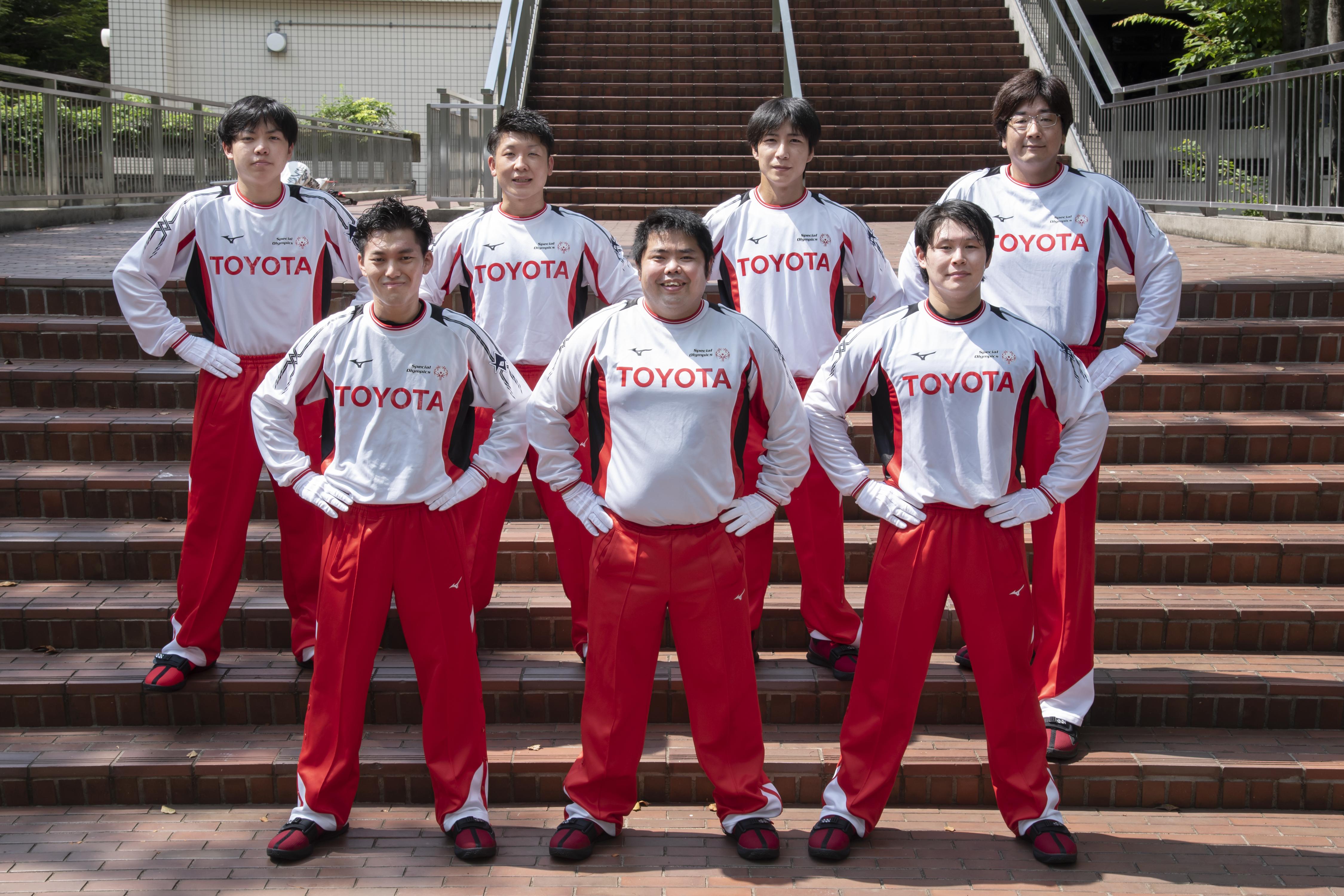
Regarding Toyota-style cheering, Okuda adds:
The female cheerleading team includes former cheerleaders, baton twirlers, and dancers. On the other hand, almost all of the members of the male cheering team have no previous experience. I think it is very demonstrative of Toyota’s cheering to have amateur employees practice hard and to have only employees standing in front of the spectators.
It is important to enjoy together
For the two of them, the list of memorable matches is endless—the women’s basketball team’s first victory in the Empress’s Cup (All Japan), the baseball team’s first victory in the Intercity Baseball Tournament, the rugby team’s big come-from-behind victory in an away game in a downpour, and many more. However, they both agree that there are more important things than winning and losing.
Shirasaka emphasizes it is important to “enjoy together.”
We ourselves must enjoy cheering for all the spectators to find our cheering enjoyable. The Squad and the spectators should be able to enjoy cheering together. Lately, it does not even feel like I am going out to cheer; it is more like I am getting power from the people cheering at the venues.
Okuda nods in agreement.
I certainly feel the support from the fans. My workplace often has work on weekends, but my colleagues kindly send me off, saying, “Leave the work to us, and good luck with the cheering.” Recently, I have come to realize that the Toyota Cheer Squad is one of the clubs that is most rooted for by the Toyota family, and I feel like I am outputting their support.
Interestingly, the two who lead the Cheer Squad do not think of themselves as leading the cheering. The Squad is empowered by fans and employees and imparts that power to the athletes on their behalf.
(Text : Takeshi Sato, Photo: Seiga Nagae)
The Toyota Times resumed the “Toyota Times Athletes Now” on Wednesday, October 6, 2021 to report on Toyota athletes who are training hard with high aspirations as well as the challenges of the motorsports team. The program will be provided once a week first in Japanese and made available in English with subtitles at later dates.

